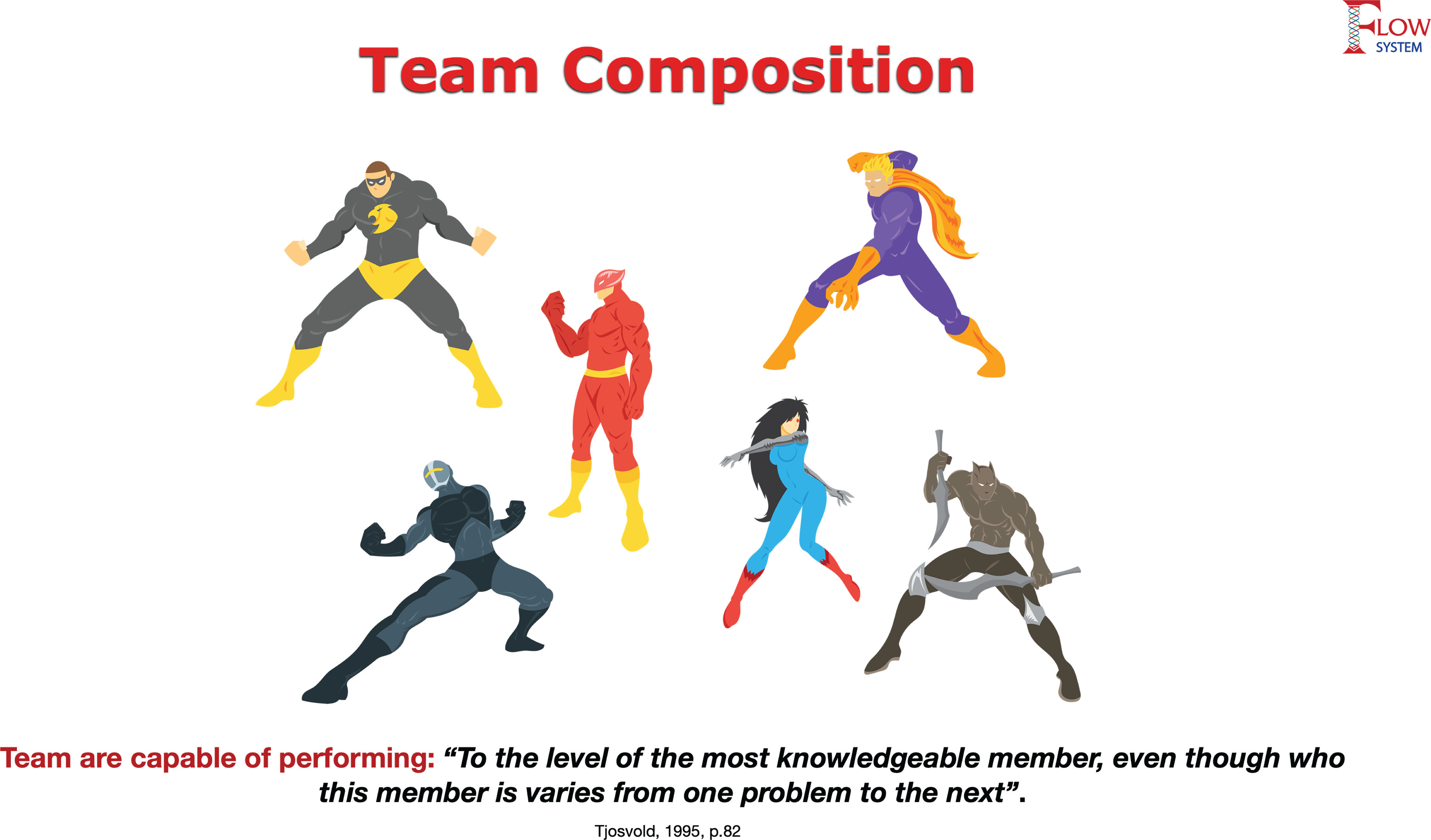TEAM COMPOSITION
Definitions
The aggregated knowledge, skills, and abilities (KSA) of team members that allow the team to complete task assignments.
“The configuration of team member attributes and characteristics within a team that subsequently influence team processes and outcomes.” (Zhu et al., 2021, p. 1283; Bell et al., 2018; Wolfson & Mathieu, 2017)
“The configuration of member attributes.” (Bell et al.,, 2018, p. 349)
“The combination of members’ characteristics” (Mathieu et al., 2019, p. 25).
References:
Bell, S. T., Brown, S. G., Colaneri, A., & Outland, N. (2018). Team composition and the ABCs of teamwork. _American Psychologist_, _73_(4), 349-362. https://doi.org/10.1037/amp0000305 (The Science of Teamwork)
Mathieu, J. E., Gallagher, P. T., Domingo, M. A., & Klock, E. A. (2019). Embracing complexity: Reviewing the past decade of team effectiveness research. _Annual Review of Organizational Psychology and Organizational Behavior_, _6_(1), 17-46. https://doi.org/10.1143/annurev-orgpsych-012218-015106
Zhu, X. S., Wolfson, M. A., Dalal, D. K., & Mathieu, J. E. (2021). Team Decision Making: The Dynamic Effects of Team Decision Style Composition and Performance via Decision Strategy. _Journal of Management_, _47_(5), 1281-1304. https://doi.org/10.1177/0149206320916232

Image: Copyright PDN and TFC. Reuse with permission required.
Description
Teams must be composed of the requisite KSA required for team to complete their assigned tasks.
“A well-composed team has members who have the required complement of knowledge and skills, and can effectively integrate their efforts to achieve the team’s purpose.” (Bell et al., 2018, p. 351; Wageman et al., 2005)
References:
Bell, S. T., Brown, S. G., Colaneri, A., & Outland, N. (2018). Team composition and the ABCs of teamwork. _American Psychologist_, _73_(4), 349-362. https://doi.org/10.1037/amp0000305 (The Science of Teamwork)
Wageman, R., Hackman, J. R., & Lehman, E. (2005). Team Diagnostic Survey:Development of an Instrument. _The Journal of Applied Behavioral Science_, _41_(4), 373-398. https://doi.org/10.1177/0021886305281984